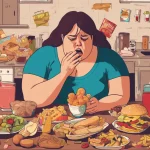Anyone with a Grindr account will already be familiar with the terms ‘top’ and ‘bottom’.
In fact, these terms are vastly used throughout the LGBTQ+ community, and have become somewhat common knowledge to many people.

In this article, we will be looking into the benefits and effects of PrEP, and who is more at risk of contracting HIV. So, let’s get into it.
What Is A ‘Top’ And A ‘Bottom’?
The terms ‘top’, ‘bottom’, and ‘switch’ are commonly used throughout the LGBTQ+ community. They are used to describe an individual’s preferred positioning during sexual acts.
These terms were first coined in the 1970s to describe the sexual preferences of, specifically, gay males.
In recent years, these terms have been embraced by the LGBTQ+ community as a whole to express what they desire during sex.
Note: the definitions for these terms will be different depending on who you ask, so the definitions listed below are a general guideline for what they mean.
Tops
Typically, the top in a relationship is the person who prefers to give, rather than receive.
A top with a penis would be the person in the relationship to penetrate the other. A top with a vagina may prefer to give oral sex rather than receive it.
A general way to put it is that the ‘top’ is, typically, the individual who takes control during sexual acts.
It doesn’t necessarily mean that they will be ‘on top’, position wise, but they will be the one who takes the lead during the act.
Bottoms
As you may have guessed, the bottom in a relationship is the one who tends to receive rather than give.
A bottom will be the individual who gets penetrated, or receives oral sex, etc., rather than performing these acts on the other person or people.
In simpler terms, a bottom would prefer to be controlled, rather than taking control themselves.
Again, this does not mean that they prefer someone being on top of them: these terms are not related to sexual positions, but instead, the power dynamic of the acts.
Who Is More At Risk Of Contracting HIV?
According to statistics, males who are homosexual or bisexual have a higher chance of obtaining HIV than heterosexual males.
The explanation for this is that the act of anal sex has a transmission rate upwards of ten times higher than the act of vaginal intercourse.
Of course, straight couples can perform anal sex too, but since it is more common with gay men, the risk of catching HIV is generally higher for the latter group.
So, why does anal sex have a higher transmission rate?
It is much more likely for an individual to receive an internal tear during anal sex compared to vaginal. Vaginas create a natural lubricant during sexual acts, whereas anuses do not.
When an anal fissure has been opened, it becomes much more likely that HIV can transmit into the blood stream of the recipient.
Therefore, as a rule, a bottom is more likely to be at risk of contracting HIV than a top.
However, it is important to note that anyone that participates in sexual acts with a partner who is HIV positive is at risk of contracting the virus.
All You Need To Know About PrEP

Pre-exposure prophylaxis, or PrEP, is a treatment that combines two drugs (tenofovir and emtricitabine) to effectively combat infection while also preventing HIV from reproducing in a person’s body.
By keeping the virus from reproducing or developing inside the body, it helps to significantly lower the overall risk of HIV transmission.
Types Of PrEP Available
Truvada and Descovy are the two PrEP drugs that are currently authorized by the FDA. When used correctly, each of these drugs prove to be up to 99 percent effective at preventing HIV.
The most significant distinction between the two treatments is that Descovy is only certified to be used by cisgender men and transgender females, whilst Truvada is licensed for all demographics.
When To Take PrEP
PrEP should be taken for, at very least, 7 days prior to any unprotected sexual acts. This is the maximum time it will take for the medication to become fully effective against HIV.
This medication comes in tablet form, and will need to be taken in different ways depending on a number of factors, including how often you have sex.
For those having anal sex, or straight guys having vaginal sex, a 2:1:1 dose is the most beneficial.
This procedure includes consuming two pills as a double dose 2-24 hours before sex, followed by a single pill 24 hours later, and then again 48 hours later.
2:1:1 dosing is not suitable for anyone with a vagina.
Instead, PrEP is suggested for cis women, trans men, and anyone with a vagina at least six days a week, since it is absorbed differently in vaginal tissue than in rectal tissue.
Your best option is to pay attention to your doctor’s instructions when you are prescribed the drugs initially.
How To Get PrEP
In order to receive a prescription for PrEP, you will need to contact a medical professional, such as a doctor or physician.
Before you get PrEP, you will need to take an HIV test to ensure that you are not already HIV positive.
Side Effects Of PrEP
Even when used for a long period of time, PrEP has little or no negative health impacts. However, while using it, a consumer may encounter some small adverse effects.
Here are some of the side effects that you may experience:
- Weight loss
- Weight gain
- Headaches
- Nausea
- Vomiting
- Diarrhea
- Abdominal pain
- Rash
What PrEP Doesn’t Do
Unfortunately, PrEP does not cure HIV. It, instead, prevents you from contracting it from others if you are HIV negative.
It is still recommended that you use contraceptives, e.g., condoms, while having intercourse with a partner to prevent other sexually transmitted diseases, as PrEP only protects you from contracting HIV.
Final Thoughts
Overall, if you engage in a frequent amount of anal sex – whether you’re gay or straight, a top or a bottom, etc. – PrEP is something you should definitely think about taking for your own safety.
Additionally, we recommend that you continue using condoms if you are planning on having intercourse with someone who you are not fully familiar with.
By combining condoms and PrEP, you will be as protected as possible. We hope you found this article useful.
- Understanding Male Reproductive Health: A Complete Guide - February 2, 2025
- Simple Healthy Skin Habits for Radiant Skin - December 6, 2024
- Unlocking the Connection Between Nutrition and Mental Health - December 3, 2024








